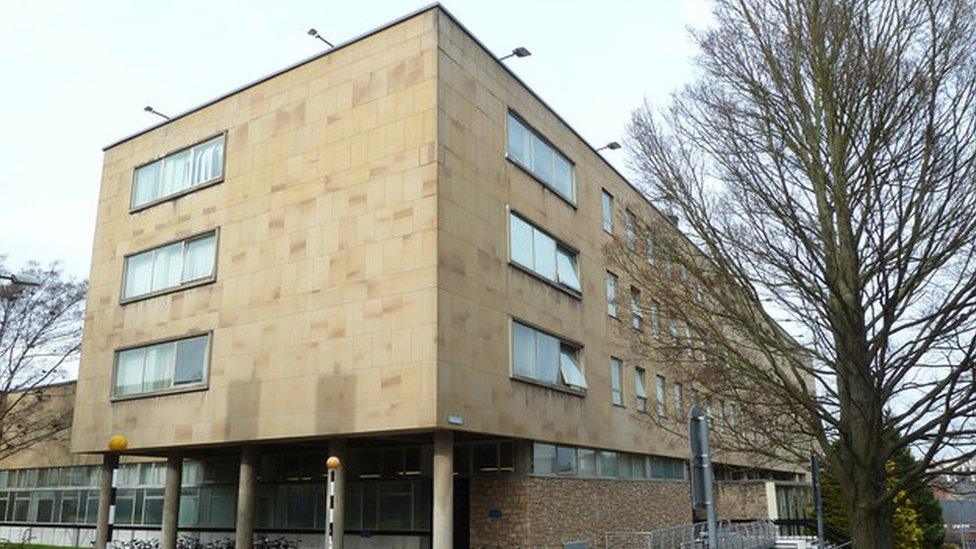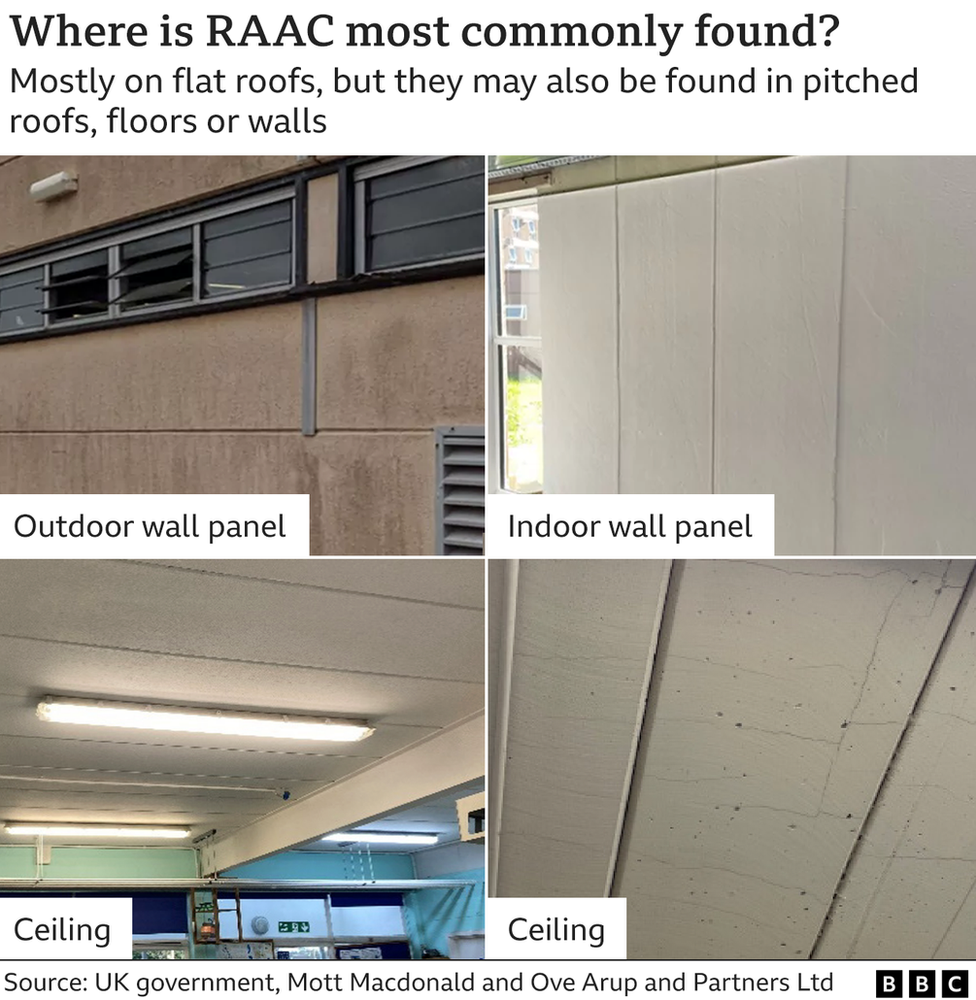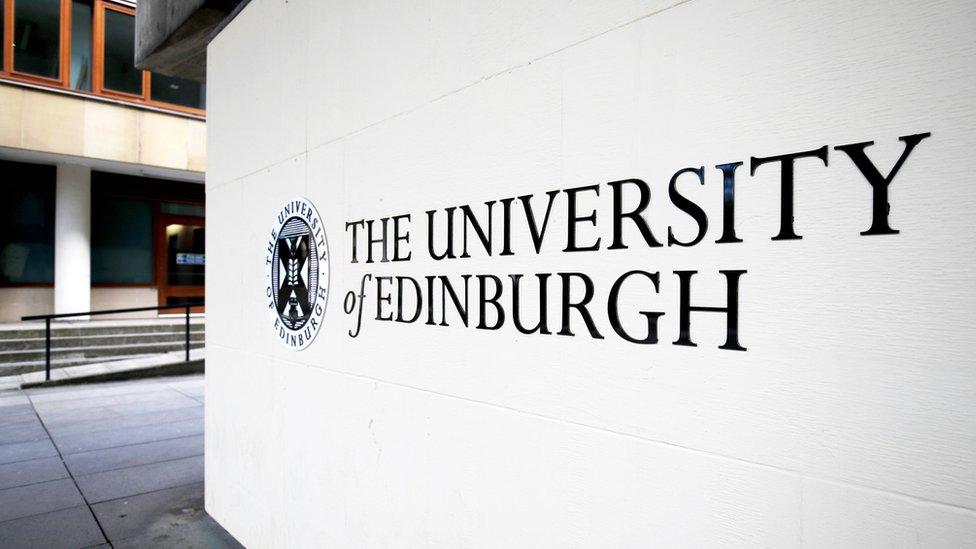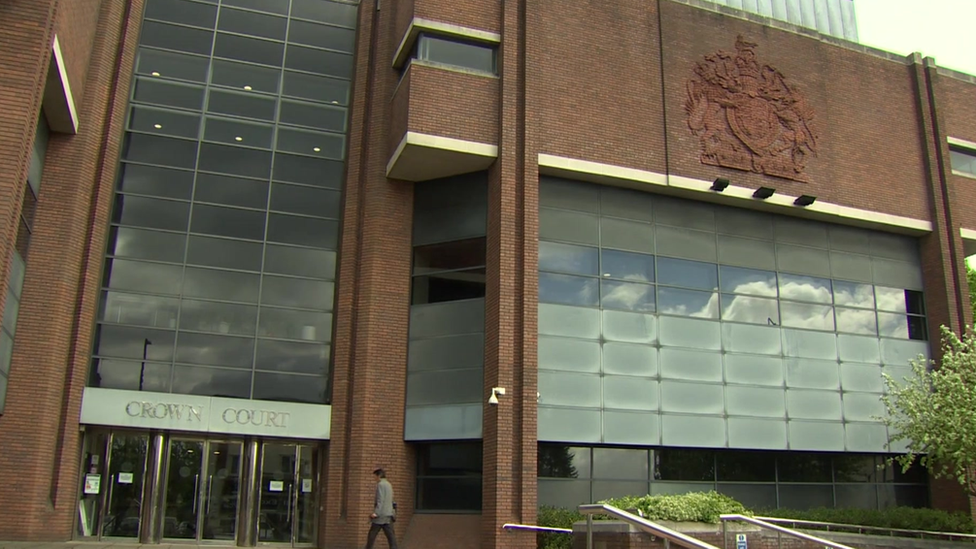RAAC concrete repairs could cost millions, says Dundee University
- Published
- comments

RAAC was used in construction of The Fulton Building at the University of Dundee
Replacing concrete in university buildings across Scotland could cost millions, Dundee University has warned.
Experts say buildings across the UK built from reinforced autoclaved aerated concrete (RAAC) could now be at risk of collapse.
The material has been found found in at least 24 university and college buildings in Scotland.
A spokesperson from the University of Dundee said removing RAAC from campuses would be a big undertaking.
Speaking on BBC Radio's Good Morning Scotland programme, Rose Jenkins, the director of estates at the University of Dundee said the replacement process would be a long-term project.
She said: "It's going to cost millions. It's going to be really big projects that are going to be quite significant.
"For us, that's because they are on really big buildings, in other cases it could be a lot more straight forward and smaller.
"It's not something we've budgeted for, but we do hold contingencies to ensure we are able to cope."
Dundee University is working with contractors, architects and structural engineers to decide the best way to remove the substance.

RAAC is a cheap version of concrete that was used mostly in construction between the 1950s and 1990s.
The Health and Safety Executive said RAAC was now beyond its lifespan and may "collapse with little or no notice".
The material is present in a number of university and college buildings around Scotland.
Ms Jenkins said RAAC was present in two buildings on the University of Dundee's campus, including the engineering building and part of the student union building.
She continued: "We have taken the precautions necessary to ensure staff and students are as safe as they can possibly can be.
"Where we feel there that is a heightened risk, we have cordoned those areas off and if anybody needs to go into them there's a full risk assessment and PPE provided."

RAAC has been found in eight University of Edinburgh buildings
Meanwhile, Edinburgh University has identified eight buildings with RAAC and Heriot Watt has identified five non-residential buildings, according to a freedom of information request by the Scottish Liberal Democrats.
The party said it had also been found within the Students' Association building at the University of St Andrews and some Edinburgh Napier buildings.
Dundee and Angus College identified two buildings, the Engineering Block and Construction Block of Kingsway Campus, where the substance was used.
Edinburgh College and Glasgow Clyde College have also identified buildings where RAAC was in use, the party said.
The leader of the Scottish Liberal Democrats, Alex Cole-Hamilton said: "It is time for the Scottish Government to come up with a proper plan of action for resolving this issue for good."
First Minister Humza Yousaf has said work to investigate the use of RAAC across the public sector in Scotland will "take some time".
He said there was no immediate risk to staff or pupils and that sites will continue to be monitored.
- Published3 September 2023

- Published19 September 2023

- Published1 September 2023
